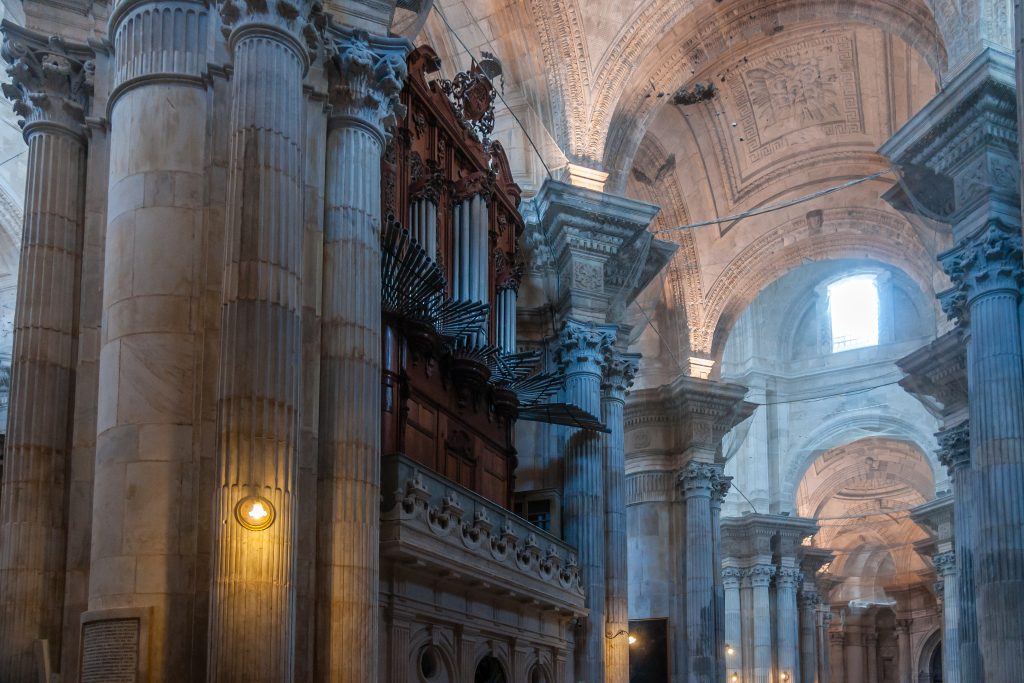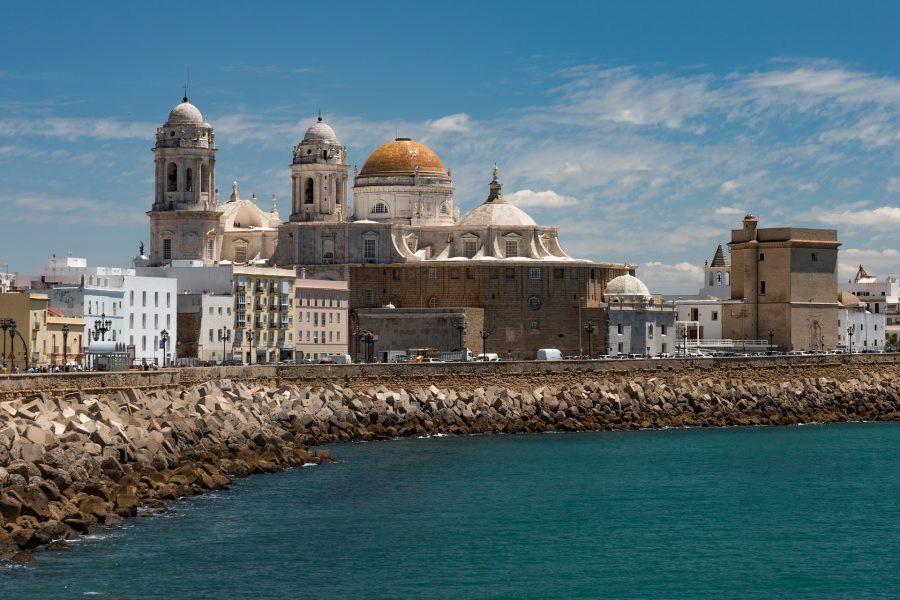CÁDIZ – The cathedral in the southern Spanish city has a high risk of crumbling masonry. However, it has been 10 years since the last significant restoration work.
Just three months after the consecration of the new cathedral in Cádiz, cleric Domingo González Villanueva raised the alarm. Referring to its new vaults, he warned in the cathedral chapter that “stone slabs and somewhat larger pieces are falling.” This was in 1838.
Nearly two hundred years later, salt continues to erode the cathedral’s roofing. A piece of masonry came loose from the façade in January this year. It was a reminder that no significant restoration has taken place in ten years. Nor has the plan to tackle the issue requested by the Andalucian regional government been executed.
Net to catch falling masonry
The building closed between 1969 and 1983 due to falling masonry. In 1989, they installed a large net in the interior vaults to catch any other falling pieces. As soon as you enter the vaults you can see the state of disrepair.
Juan Jiménez Mata, the architect who installed the net over 30 years ago, is unable to say how much weight it would stand in the event of a major incident.

Nets to catch falling masonry are visible under the vaults
Poor materials and lack of upkeep
Work began on the cathedral in 1722 but took over 100 years to finish. As the city went from riches to economic crisis, so the building materials became cheaper. In the end, the cathedral consisted of 24 different kinds of stone.
However, it is the Estepa limestone material that is the main cause of the problem. As Juan Jiménez Mata, the architect behind the last 16 major restoration projects, explained to El País: “When there was less money, this stone was used in the areas above the cornices. The trouble is that this stone is softer and reacts far worse to the weather.”
However, due to its position, so close to the ocean, the salt in the air penetrates the walls. The mortar was made from beach sand and water from a well in the crypt. The architect Alberto Jiménez, son of Juan Jiménez Mata, told El País “when the tides were high the mortar did not set, and the lime turned to dust.” This means the ashlars are held in place with nowhere near the material that is needed.
The sea air does the rest. The salt dissolves with the humidity, penetrates the ashlars and breaks them when it crystallises again on dry days.
Add years of neglect to the list of issues, and it is little wonder the cathedral is crumbling. During construction, it spent 40 years without a roof. Then in 1947, an explosion left the building without windows for years.
Work intensive and expensive solution
The solution is to fill the empty joints with new mortar and replace the missing masonry. However, this is expensive and work intensive when extended across the 3,100m2 of vaults. The cost, calculated in 2009, would be €15million. That was what was presented to the regional government.
When El País contacted the culture department’s representatives in Cádiz, they had no idea why the architect’s master plan remains unapproved.
During 1998 to 2009, investment of €3.8million was given to other restoration projects. But funding is not forthcoming for the vault restoration plan. It is clear where restoration work has been carried out on the roof, the same can not be said for the vaults.
Meanwhile, the cathedral chapter focuses on annual maintenance for the roofs and on emptying the net, as well as occasionally restoring chapels and sculptures.
The Jiménez Mata family of architects is concerned about the lack of major work on the ravaged vaults. “There should be a group of contracted masons, led by an architect, constantly reviewing roofs and cornices,” says Juan Jiménez Mata.
183 years after the alarm was first raised, the ‘salt curse’ persists at Cádiz Cathedral.


